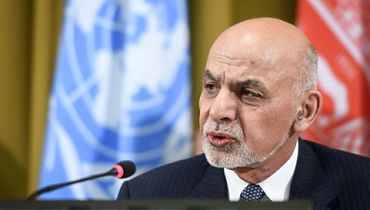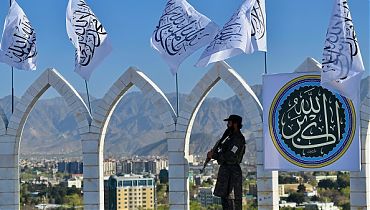
Recent developments in Syria, particularly the capture of Damascus by Hay’at Tahrir al-Sham (HTS) and the subsequent appearance of its leader, Ahmad Sharaa, in formal attire, have drawn significant attention. This victory, coupled with the Taliban’s similar success in Afghanistan in 2021, has sparked comparisons between the two groups, particularly regarding their ideologies, governance styles, and approaches to international relations. While both groups share fundamentalist Islamic ideologies, their methods of administration, engagement with the international community, and handling of social issues reveal notable differences.
Seizing Power
Both the Taliban and HTS achieved power in a remarkably short time. In August 2021, the Taliban seized Kabul in just 11 days, while HTS captured Damascus in December 2024 within 12 days. In both cases, the sitting presidents—Ashraf Ghani and Bashar al-Assad—fled immediately after the respective falls. For some Taliban supporters, these parallels symbolized the successes of jihadist movements.
However, their approach to foreign allies differed significantly. While the Taliban often concealed their reliance on foreign fighters, HTS openly collaborated with international armed groups and even shared evidence of such partnerships through media outlets.
Shared Ideology, Divergent Implementation
Both groups adhere to fundamentalist Islamic ideologies, emphasizing the implementation of Sharia law and jihad to establish an “Islamic state.” Yet, their application of these ideologies differs markedly.
Taliban’s Domestic Policies
Under Taliban rule, Afghanistan has seen stringent policies restricting women’s rights, civil liberties, and education. These include bans on women’s work and education, even dissolving the Ministry of Women’s Affairs.
HTS’s Domestic Policies
Conversely, Ahmad Sharaa (Abu Muhammad al-Jolani), leader of HTS, has publicly stated his intention not to emulate Taliban-style governance. Unlike the Taliban, HTS has allowed women and girls access to education in its territories. Sharaa has emphasized a more flexible approach, recognizing the importance of women’s roles in society.
Leadership Styles
Mullah Hibatullah’s Policies:
The Taliban’s rigid governance has isolated Afghanistan both socially and politically. Restrictions on women’s education and employment have exacerbated this isolation.
Ahmad Sharaa’s Policies:
In contrast, Sharaa’s acceptance of women’s education and his comparatively inclusive stance have garnered broader local support within Syria. This more moderate approach marks a significant departure from the Taliban’s governance style.
International Relations
Taliban:
The Taliban’s strict policies have left Afghanistan politically and economically isolated, with no country formally recognizing their government.
HTS:
HTS, under Sharaa’s leadership, has adopted a shrewder approach, engaging with media and regional actors to present a more moderate image. Sharaa has actively sought to project a positive narrative, avoiding excessive emphasis on enforcing Sharia law.
Power Structures
Taliban:
The Taliban’s power structure remains largely patriarchal, with key positions occupied by individuals with religious and militant backgrounds, often lacking formal education. For instance, Mullah Mohammad Hassan Akhund, the 80-year-old prime minister, holds limited cabinet meetings due to health issues.
HTS:
In contrast, HTS has prioritized appointing educated officials. Notably, Aisha al-Dabbas, the head of the Women’s Affairs Office, is both highly educated and a human rights activist. This emphasis on qualifications has helped HTS craft a more modern image.
Engagement with the International Community
While the Taliban has faced significant isolation due to its hardline policies, HTS has worked to foster international engagement. Sharaa has made media appearances and conveyed positive messages to the global community, refraining from focusing solely on strict Islamic governance.
The Road Ahead
Although HTS has so far presented a distinct image from the Taliban, experts caution that it is too early to predict the long-term trajectory of their governance. How HTS addresses human rights, civil liberties, and sensitive social issues will serve as a critical litmus test.
In summary, while the Taliban and HTS share ideological roots, their approaches to governance and societal issues differ significantly. These differences stem not only from their distinct geographical and social contexts but also from the leadership styles and political strategies of their respective leaders. Only time will tell whether these differences will endure in the long run. WASHINGTON and his




